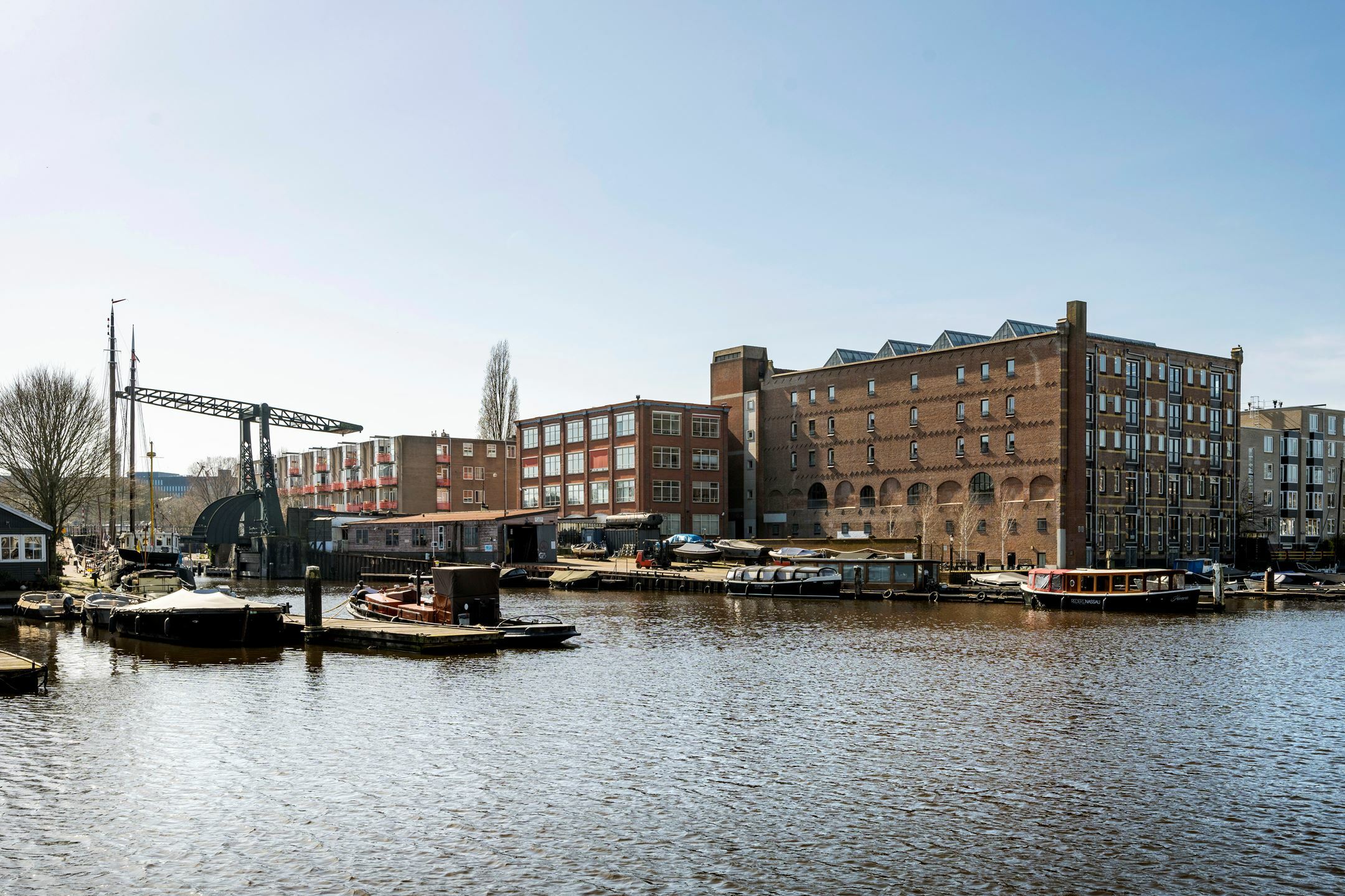Portview
Shipbuilding has taken place in the Eastern Docklands of Amsterdam since the 16th Century, and a sense of maritime promise endures today. In fact, Chapter No. 11 is located on one of the two main streets that give the “Kadijken” neighbourhood its name: a prestigious address that has sent countless wooden and iron vessels out into the world.
Built from orange brick and blessed with plenty of windows, the street-facing part of Chapter No. 11 was erected at the end of the 20th century on land partly acquired from the adjacent Koning William shipyard that was still operational until the end of 2017. Its arch-shaped underpass serves as the portal to Het Vriesseveem: a renovated warehouse building at the rear, whose windows sensitively echo the arch motif.
It's from here that Chapter No. 11 offers views worthy of an Old Master painting, namely the calm, open waters of the 17th Century Nieuwevaart canal. Immediately behind it, the picturesque Wittenburgergracht is home to the Oosterkerk: a landmark church with its distinctive lead-clad wooden belltower. The windows to the side of Chapter No. 11 offer equally pleasing views of the steel drawbridge over the Entrepotdocksluis and the Museumwerf ’t Kromhout.
Chapter No. 11 contains more than 1,350 sqm of modern, light workspace over four floors, connected by a staircase and an elevator. It has excellent transportation links thanks to its proximity to both Centraal Station and the Piet Hein tunnel, and the building has its own car parking spaces. The Pelikaanbrug over De Nieuwevaart offers pedestrians and cyclists a fast connection between Hoogte Kadijk and the rest of the Eastern Docklands.
The wider maritime quarter boasts numerous celebrated restaurants and cafés, including the independent brewery, Brouwerij Het IJ. There’s plenty to satisfy culture vultures too, from Artis zoo and the National Maritime Museum to the warehouse arts centre Pakhuis de Zwijger and the waterside music venue, Muziekgebouw aan het IJ.

On-site Amenities


